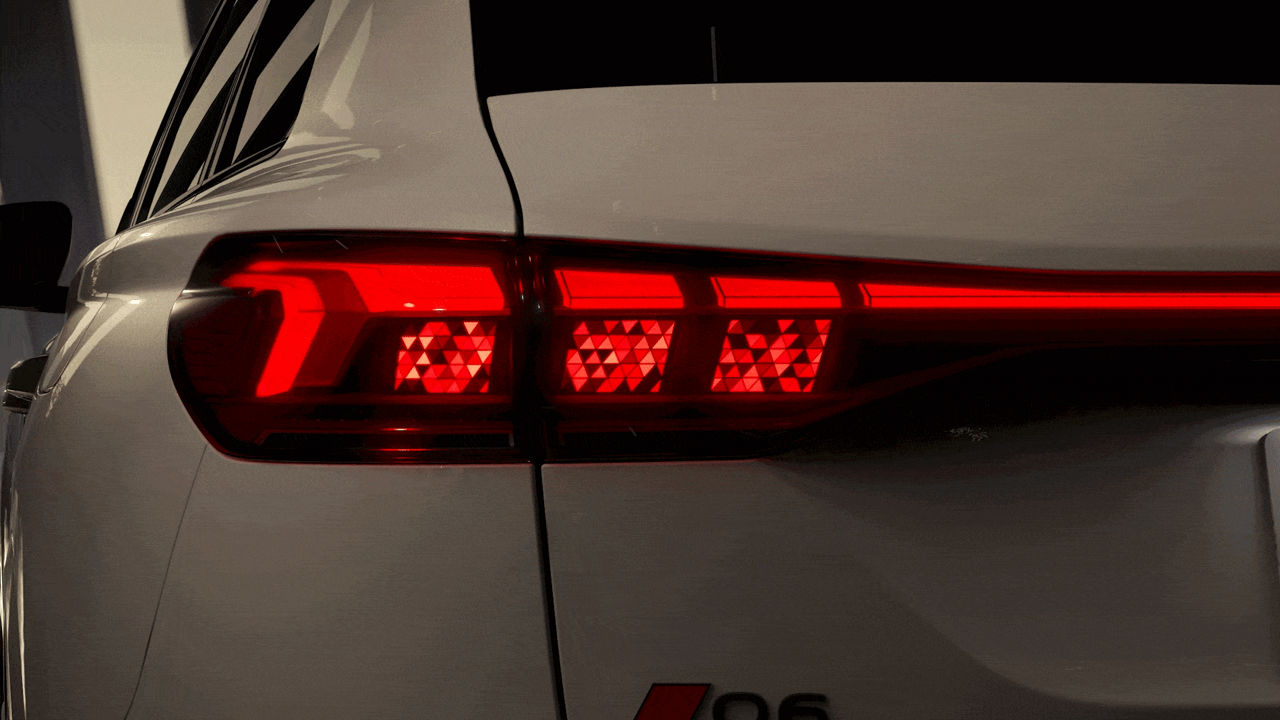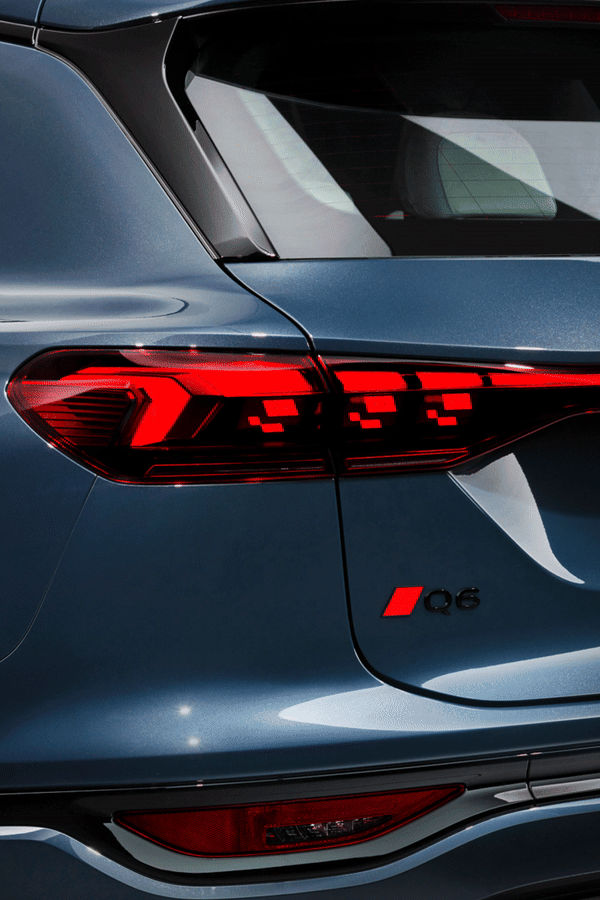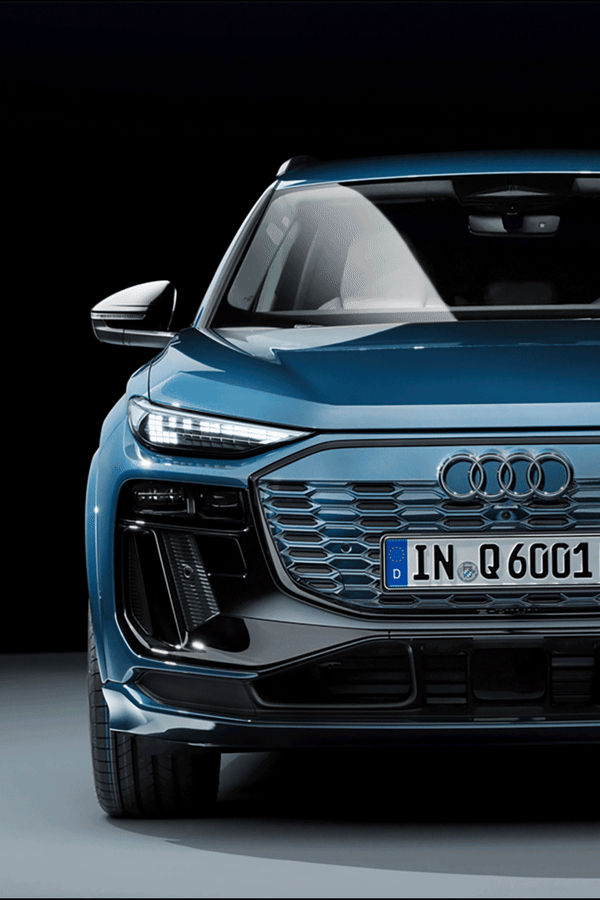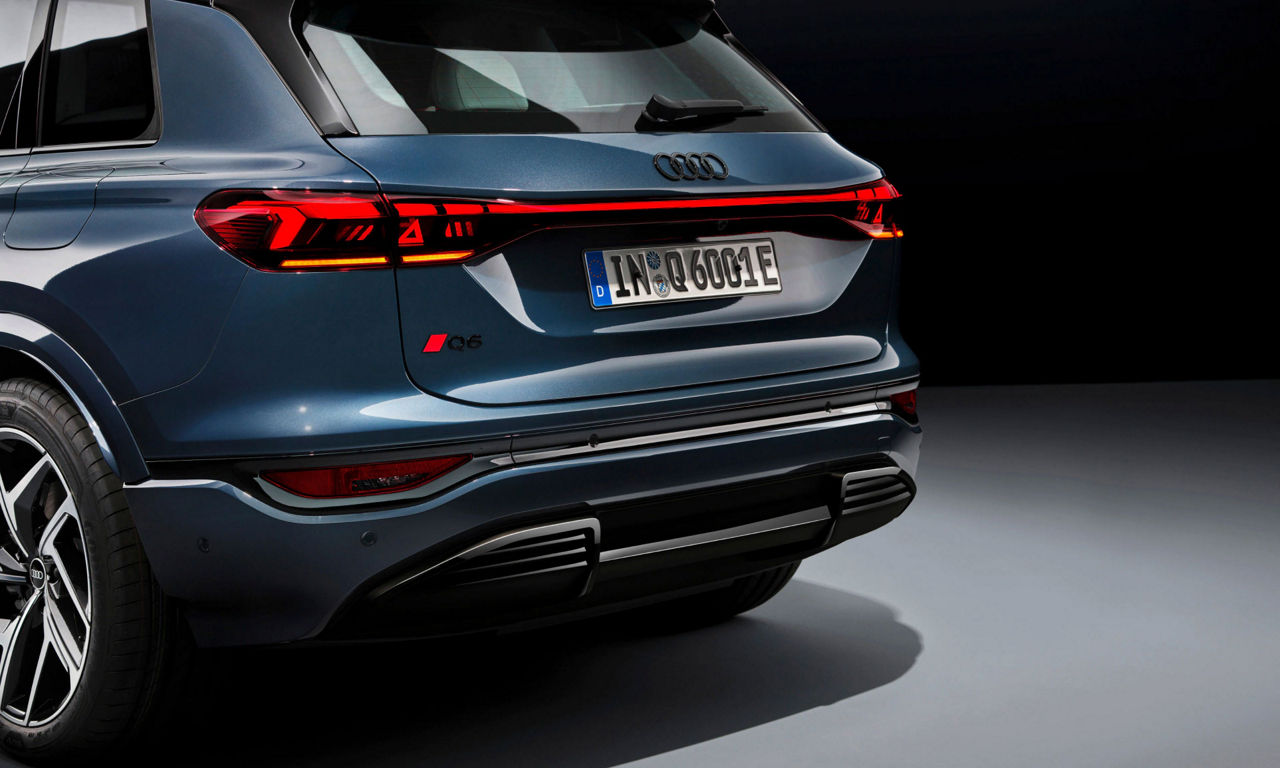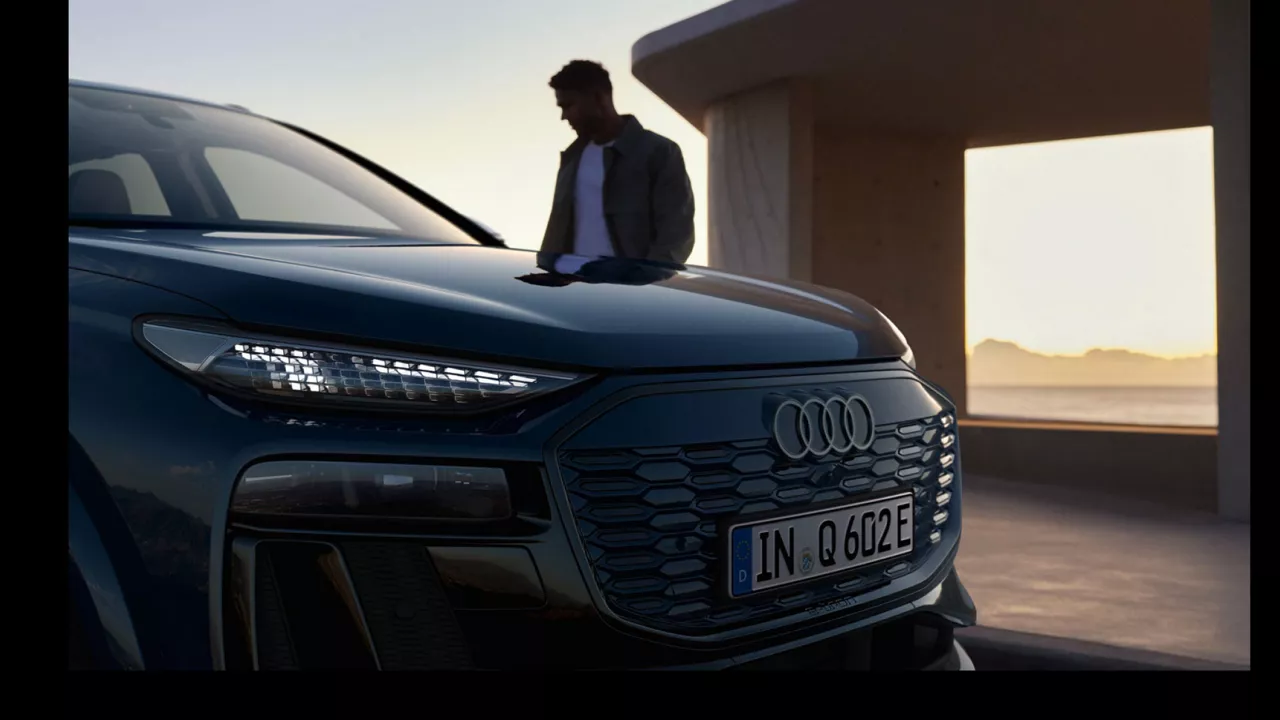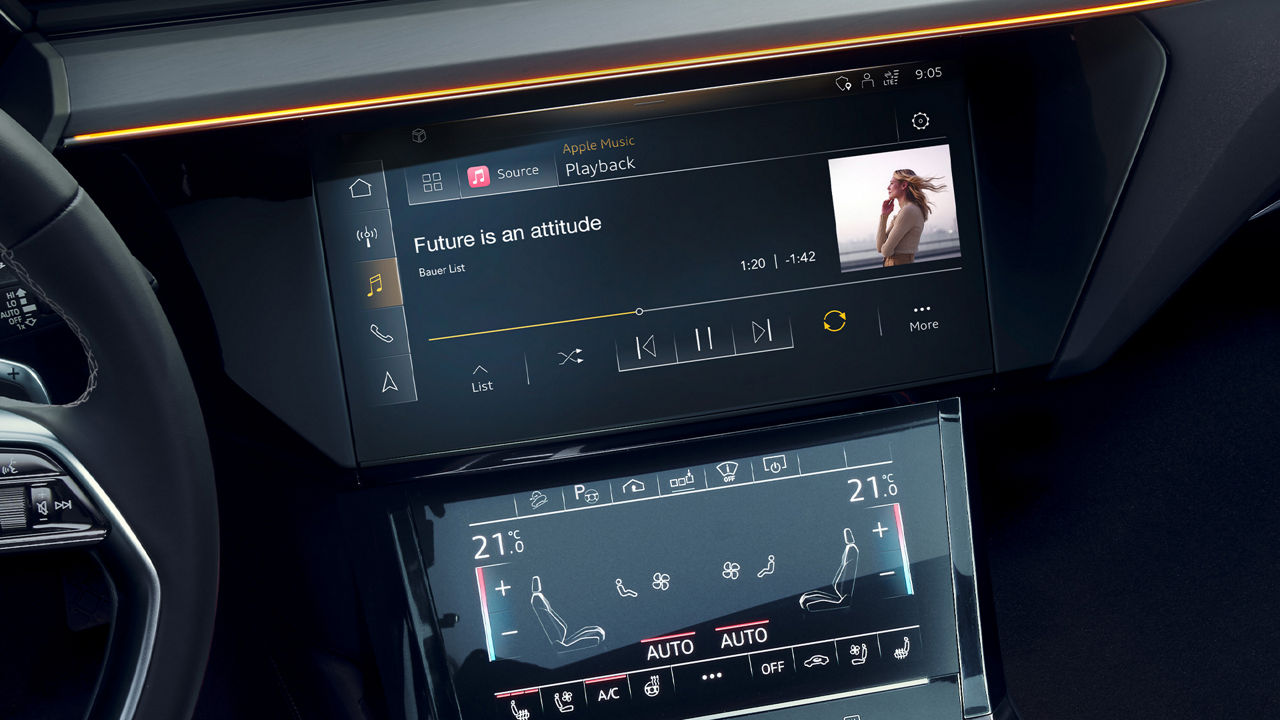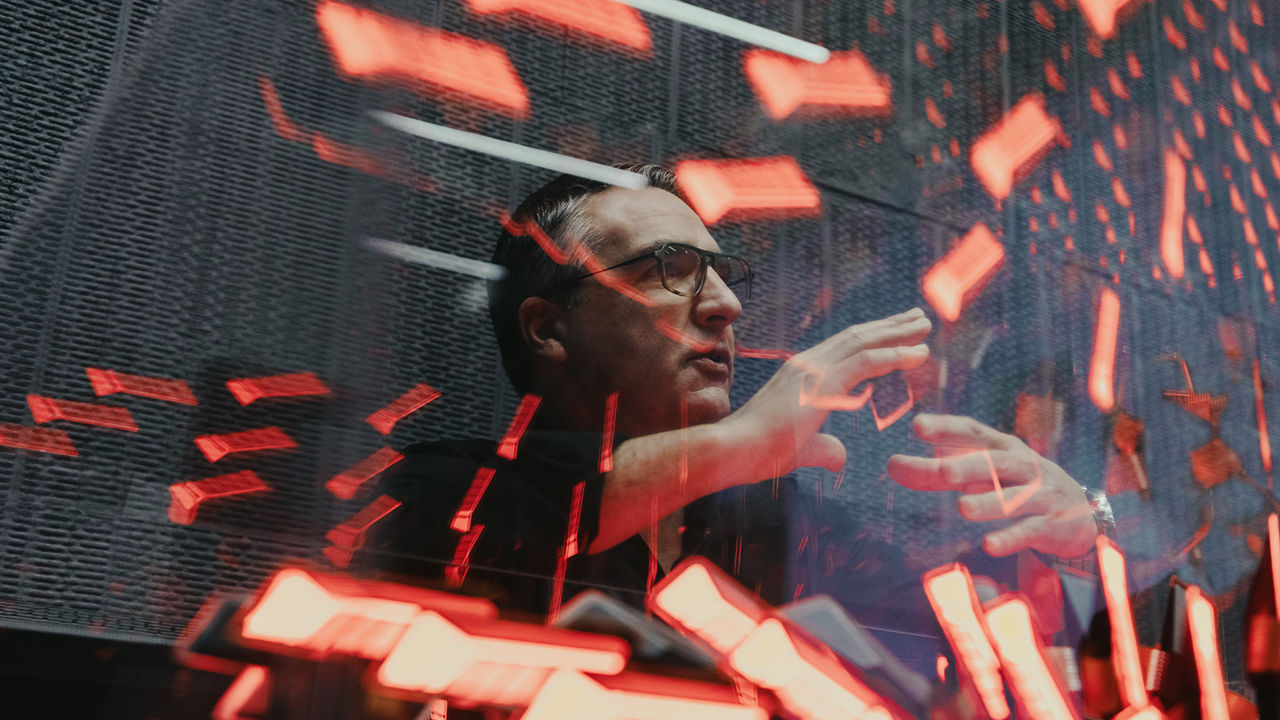The active digital light signature combines the signature and movement of light for the first time. The aim of the Audi designers is to visualise agility and personal interaction with the Audi Q6 e-tron through constant movement of light. At first glance, the headlights and rear lights appear communicative and intelligent. The active digital light signature is protected and patented by Audi and, as a unique lighting design in the Audi Q6 e-tron, makes “Progress through lighting technology” visible in series production.
Technologically, this is a masterstroke by the Audi lighting development engineers. A software module of the new E³ 1.2 electronics architecture generates a new image of the active digital light signature every ten milliseconds using a specially developed algorithm. In the second generation of digital OLED rear lights, which the Audi Q6 e-tron has for the first time in series production, 360 segments in six digital OLED panels can be controlled for a customised lighting design. This technological advance enabled the developers to create a dynamic lighting design such as the active digital light signature. The active digital light signature with twelve segments that dim up and down is created in the digital daytime running lights of the matrix LED headlights at the front.
And that is the crucial point: dimming up and down. Dr Werner Thomas, project manager for digital OLED and exterior displays, is responsible for the development of the technology: “Legislation prohibits any variation in brightness in a vehicle’s lighting function. During pre-development, however, we discovered that we could divide our OLED component into switchable segments. This means that we can make one segment brighter and dim a sub-segment darker at the same time, so that people can see movement. However, a control instance in the software ensures that the light intensity always remains constant.“
One of the keys to Audi’s success in bringing this innovation to series production is early coordination with the technical services of the vehicle homologation authority. Florian Runkel, responsible for implementing the exterior light function in series production: “We’ve spent years in very constructive discussions with the authorities, describing what we intend to do, showing prototypes, carrying out light image measurements, adapting algorithms, providing evidence. Always making sure that we comply with the legal boundary conditions, especially when it comes to the constant light intensity.
